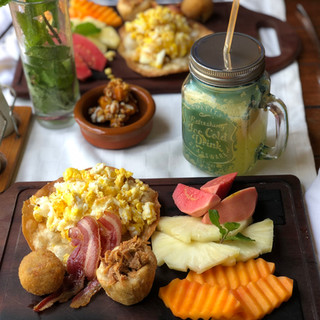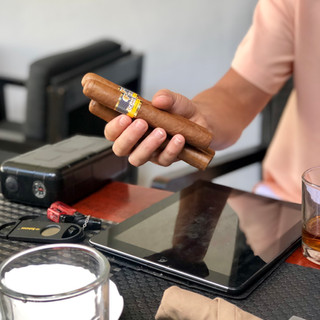Havana, Cuba
- reveredc

- Jul 9, 2019
- 6 min read
Updated: Jun 10, 2021

Havana, Cuba - Cuba has been on my travel list for years. I tried to plan a girls trip two years in a row. This year I decided I would go to Cuba even if I had to travel alone. Two months before the trip one of my friends decided she would join the adventure. She stayed 6 days and I stayed 9 days. Please note Cuba is very safe and plenty of people travel to Cuba alone. In fact, on many of my activities there were other people in attendance who were traveling alone.
There are 11 categories of authorized travel to Cuba which include: family visits; official business of the U.S. government, foreign governments, and certain intergovernmental organizations; journalistic activity; professional research and professional meetings; religious activities; public performances, clinics, workshops, athletic and other competitions, and exhibitions; support for the Cuban people; humanitarian projects; activities of private foundations or research or educational institutes; exportation, importation, or transmission of information or informational materials; and certain authorized export transactions.
As of June 2019 people-to-people or educational activities category of travel are no longer an option.
I traveled to Cuba under support for the Cuban people. Under this category U.S. citizens traveling to the island typically stay in Airbnbs and eat at paladars, restaurants that are run by Cubans rather than state-owned establishments. Travelers must have a passport, Cuba travel card, insurance, and itinerary. While I was only asked for my passport and Cuba travel card at the airport it is important to have all required items and keep receipts for 5 years after the trip. While uncommon, Americans visiting Cuba risk having their stay audited when they come home and could face fines if they engage in prohibited transactions.
Airbnb was incredibly beneficial for planning. I found 2 homes and to my surprise Airbnb now has experiences. You can choose activities for your trip through Airbnb and it also helps track your expenses for auditing purposes. I booked a classic car tour, cigar class, mixology class, museum tour, photoshoot, salsa class and more. I mapped out my itinerary, booked my flight, purchased my travel card, got insurance, secured my Airbnb home/activities and patiently waited for May 24 to arrive. Every other day I googled Cuba to stay abreast of current events. As the day of departure grew closer political issues threatened to cause challenges for my trip. I remained positive. After months of extensive research and planning, the day was finally here. I’ve never been so excited for a trip!
I packed school supplies to donate to a local school. FaceTime and Skype do not work well in Cuba so I downloaded IMO. It is Skype for Cuba. It worked well, but I rarely used it since I didn’t have WiFi. Maps.me was very helpful. I downloaded Cuba prior to departure and used it daily for navigation. Google translate was another great tool. I downloaded Spanish prior to departure and used it to communicate with my Airbnb host and to pick up some quick phrases to speak to the locals. Since I did not have WiFi I could not hear the voice option on Google translate, but it still served its purpose. I tested the apps on airplane mode before the trip.

We exchanged our currency at an ATM machine in the airport. Note: U.S. credit cards do not work in Cuba. We were careful to choose Cuban convertible peso (CUC) and not Cuban peso (CUP). Both are legal currency in Cuba, and they are both in circulation. CUC has greater value and is recommended use for travelers.
Our first Airbnb home was an apartment in Vedado across the street from Hotel Havana Libre. It was an incredibly busy area so getting sleep was not much of an option. Luckily we were on vacation. With the beauty salon on one side and a clothing store on the other, we enjoyed seeing our neighbors sitting on the steps greeting us as we entered and exited the apartment.
A nice young Cuban named Angel was the first to greet us, kiss our hands and usher us into his restaurant next-door for our first meal.
Chicken and shrimp tacos with Tukola - Cuba’s version of Coca-Cola. Note: Water in Cuba is not good for drinking so we drank bottled water at all times. We were only served bottled water in restaurants also. Ala Mesa app is Cuba’s version of Yelp and it’s great for restaurant choices. Flies are everywhere including restaurants. We got used it and just covered our food.
Crosswalks are few. If you want to get anywhere you must do what we in the U.S. call jaywalking. Crossing the street in Cuba everyday was an adventure all it’s own. Also there isn’t consistency with street signs. Some signs are on the ground like the one pictured here. Some signs are on buildings. Some streets don’t have signs at all which is why Maps.me was a life saver.

Shades are a must for the sun and wind. Sunblock, a hat and umbrella as well. Cuba has 10 months of summer so the sun can be quite harsh if you are out during the day as much as I was during my trip. I also carried a small towel for my daily sweaty walks and tried to choose clothing with printed design that won’t show sweat stains.
I turned off my cellular data. All I had was basic text ability to certain ppl and a game on my iPhone called Best Fiends, plus whatever music I downloaded before I left the U.S. This interesting CubaCel network allowed me to make local calls which was great for contacting my hosts. I was also able to text certain people. I am still not certain how I couldn’t text other iPhone users, but I could text my friend who was with me, who is an iPhone user. Either way I only needed to let my parents know I was okay. 9 days no WiFi and it was great! I recommend to others download any important videos from the cloud because I was trying to show someone a video, but it wouldn’t work because I didn’t have Wi-Fi. Note: My cell phone bill was $321, its normally $131. Consider turning your phone off completely if you don’t want the hassle of a large bill.

The second Airbnb home was a beautiful colonial style home located in central Havana. This area was more residential, but we soon found out that all of Cuba is lively. The sounds outside our window were so clear even with the doors shut. We got used to it and let the sounds of our lively neighborhood comfort us. Typically it would die down around 1 AM and start back up at 5 AM. The locals have produce carts they roll throughout the neighborhood and they blow a whistle to let everyone know they are outside. Kids actually play outside and adults sit on the steps to socialize. We were greeted with warm smiles and kind voices welcoming us to their country.
Many of my activities allowed me to connect on a deeper level with the people of Cuba. No subject was off limits. It was one of the few times I’ve been able to talk about religion and politics in a comfortable setting. The information and experience that was shared was so enlightening. One of the highlights of my trip involved teaching a workshop to students at a local dance company. I met with several of the dancers earlier in the week for a salsa class and planned to meet with them later in the week for a free workshop. They are a brilliant group of young professionals and it was an honor to work with them during my time in Cuba.

With Havana’s 500th anniversary just around the corner (November 16, 2019) it’s clear the capital is gearing up for a fabulous celebration. La Habana 500 signs cover the capital and the Provincial Administrative Council has made plans to contribute to the city’s social and economic development, to knowledge of its history, and increasing residents’ sense of ownership.
Outside of Havana, I had a day at Playa Santa Maria del Mar. I did not get a chance to explore Trinidad, Vinales, or Varadero. So that means I have to go back! Until next time.





















































Comments